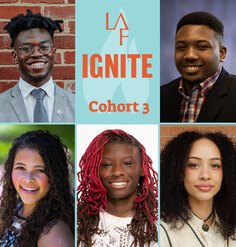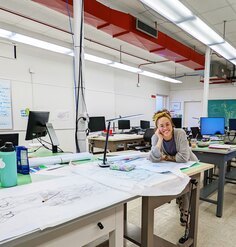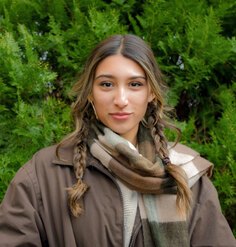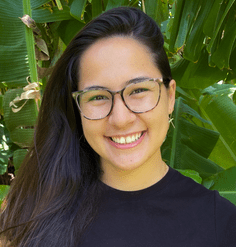Olmsted Scholar Feature: Making Connections - Science, Urgency, and Opportunities
By Matthew Gonser, 2012 University Olmsted Scholar
Our built environment reflects how and what we learn and what we believe is important to convey. The physical plan and its operations should embody our sustainability values. Also, “Students aren’t dumb.”
This quote, from my boss, Dr. E. Gordon Grau, the Director of the University of Hawai‘i Sea Grant College Program (UH Sea Grant), preceded the above declaratory principles during a 2-day conference held this past August at the University of Hawai‘i at Mānoa (UHM). The conference, which focused on rainwater catchment, was organized by UH Sea Grant with the support of the School of Ocean and Earth Science and Technology (SOEST) and the Center for a Sustainable Future. One of the many outcomes from this 2-day event was a statement of principles and list of potential pilot projects that reflect the science, urgency, and opportunities for optimizing our water resources here in Hawai‘i. Certain principles and projects spoke directly to the role of the University in demonstrating forward thinking and prudent activities as they relate to education, planning, design, and operations of our facilities and grounds.
We at the University have the privilege to conduct research, educate, and dream. But it should also be acknowledged that our facilities have as much influence on students (if not more) as what they are being taught in the classroom. That is, are we walking the proverbial walk?
UHM is located at the opening of Mānoa Valley on the island of O‘ahu, Hawai‘i. As the flagship campus of the public UH system, and one of O‘ahu’s greatest users of municipal water, UHM has the obligation to lead and demonstrate innovative solutions and practices to manage our constrained resources, through any number of activities: efficiency of fixtures, rainwater catchment, education and conservation efforts, stormwater retention and recycling for non-potable uses, etc. To that end, it is not only the responsibility of students to push for moving beyond status quo practices, but so too should faculty and staff (while still towing a fine line between advocacy and disrespect for a collective University operation).
An aspect of my position as an extension educator is making connections: to connect knowledge with users, research with application, and people with people. I am in the fortunate position of helping those with energy and resources connect with those who are interested in learning, collaborating, and contributing additional resources. Though UHM does not have a Landscape Architecture (LA) program, it does have faculty members with LA degrees (including two new hires that began this semester in the Department of Urban & Regional Planning and in the School of Architecture, respectively). It also has a variety of expertise and a culture that understands the necessity of seeking out others to co-produce with.
From just two days of faculty, staff, students, government officials, and trade experts sitting, talking, and listening, we have realized shared interests and a willingness to support each other. One manifestation is developing an entry into the EPA’s Campus RainWorks Challenge, a student competition for innovative green infrastructure design on campus. A target project is the ambitiously named “Sustainability Courtyard”. This conspicuously verdant and busy courtyard, with food vendors, a free bike pump, art installations, and a student-managed edible garden, provides the opportunity to highlight the science, urgency, and opportunities for optimizing our water resources.
With a diverse team of designers, scientists, engineers, and artists involved, the project also demonstrates the fruitfulness of working together. As the campus updates its Landscape Master Plan and Drainage Plan, a student supported vision for conservation, re-use, and celebration of water resources could be an important step in the continued efforts for the campus’ physical plan and operations to embody our sustainability values.
Since March, Matthew has held the position of Extension Faculty, Community Planning and Design, with the University of Hawai‘i Sea Grant College Program. His work includes research for and organization of workshops, conferences, publications, and other outreach and education materials for (and in cooperation with) citizens, community groups, non-profits, and public agencies, focused on livability, sustainability, and resource management issues in Hawai‘i.











